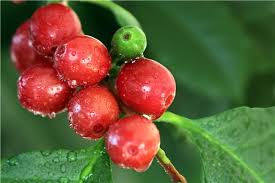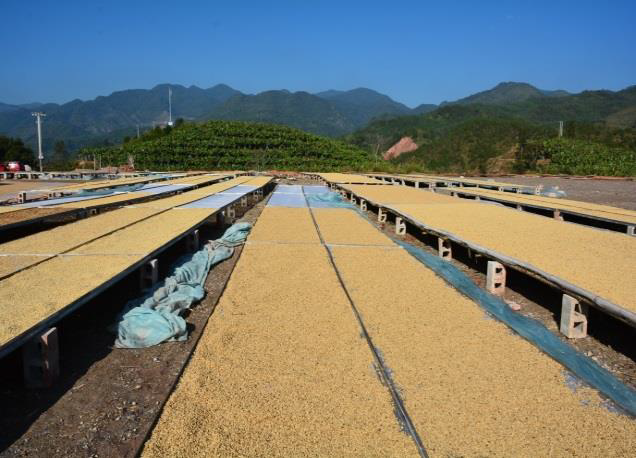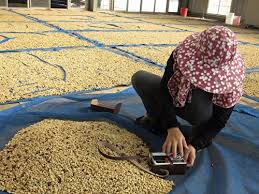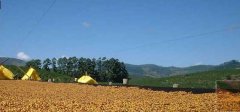Introduction to the Flavor of Coffee Bean production method in Ethiopia Valley Jikor Shamakanisha treatment Plant
Mokanisha processing plant
The Mokanisha processing plant is part of Israel Degfa, the owner of a very large-scale coffee business in Ethiopia.
Many parts of Ethiopia (Yega, Guji. There are more than 20 studios.

There are hundreds of small farmers near the Guji Mokanisha treatment plant at an altitude of 1900-2300 meters.
Send the hand-harvested bright red ripe berries to the cherry collection station every day to ensure the quality, immature and overripe will be eliminated in order to get sweet and clean washing flavor!
Ethiopia
Guji Kolcha Mokanisha washed G1
Baking degree: shallow baking
Flavor: apricot peach, sweetened peach, tender ginger, floral notes, juicy and rich taste, sweet sucrose.

Variety: Heirloom Ethiopian native species
Country: Ethiopia
Producing area: Guji Guji
Processing plant: Mokanisha processing plant
Grade: G1
Treatment method: washing treatment method
Altitude: 1900-2300 m above sea level
The unstoppable Guji producing area

Guji Zone has always been a production area worthy of considerable attention.
The development in recent years has also confirmed that the rise of Guji producing areas is indeed the development of Ethiopia in recent years.
One of the important trends. In addition to beans from larger producing areas, such as Humbela, Shaquiso, etc.
There are also excellent beans from a processing plant or even a single manor, which is a traditional Yega Xuefei producing area.
Beyond the reach of others. What's more, in terms of innovative treatments, there will be batches of honey treatment.
In addition to the recent focus of Gesha Village, the Guoji producing area has also become
An important hot spot. To understand the trends in Ethiopia, Guji can be said to be non-negligible.
Highlight.
Important Notice :
前街咖啡 FrontStreet Coffee has moved to new addredd:
FrontStreet Coffee Address: 315,Donghua East Road,GuangZhou
Tel:020 38364473
- Prev

Fine African coffee has an in-depth understanding of the flavor changes of various coffee producing areas in Africa.
When it comes to Africa, people's first impressions are: desert, drought, tribe, poverty, mystery and so on. Because of its climatic environment, it has become a paradise for the growth of coffee trees. Coffee production in Africa the first coffee tree in the world was found in the Horn of Africa. Local indigenous tribes often grind the fruit of coffee and knead it with animal fat to make many balls.
- Next

Starbucks "Star Tea" is off the shelves! It's time to talk about Starbucks' frustrated tea business.
Professional baristas follow the Coffee Workshop (official Wechat account cafe_style) in recent weeks, partners in the United States have noticed that Peach Green Tea Lemonade on the Starbucks drink list has disappeared without warning. Confirmed by Business Insider, Starbucks has made peaches and mangoes, the most important raw materials for peach, green tea, lemon tea.
Related
- What documents do you need to go through to open a coffee shop? coffee shop coffee shop certificate processing process
- How to purchase Coffee beans in small Cafe how to choose a suitable supplier for domestic Coffee supply Company
- How to drink Starbucks Fragrance White Coffee? how to make Australian White Coffee? what Italian coffee beans are recommended?
- The Story of Flora Coffee: the name of Flora Coffee Bean and the implication of the Flowers on Florna Coffee
- How much does a cup of coffee cost? How much is the profit of a cup of coffee? What is the profit of the coffee shop in a year?
- Yunnan small Coffee, known as "fragrant Coffee", introduces the characteristics of Alpine Arabica Coffee producing areas in Yunnan, China
- 2023 latest Starbucks full menu price list how much is a cup of Starbucks coffee what is better to drink the most popular hot and cold drinks recommended
- Starbucks different kinds of Coffee Price list Starbucks menu 2023 Top Ten Best drinks in Starbucks
- Starbucks Spring praise Comprehensive matching Coffee Bean theme Story Packaging implication and taste description
- The cost of a cup of coffee latte American coffee cost price and selling price

